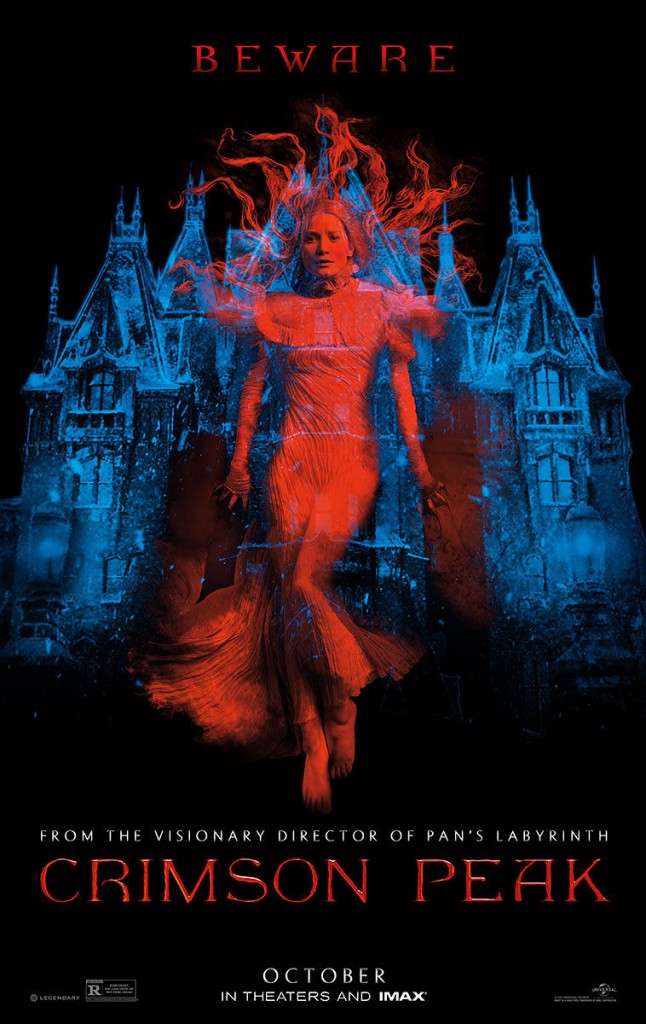Movie Breakdown: Crimson Peak (Noah)
The Impression:
Guillermo del Toro’s next film could be a 20 minute short featuring him shirtless, eating chips and watching a table tennis tournament and I’d pay money to see it. Or he could realize his dream of making a period horror film set amongst the decrepit 19th century English upper class and, well, I’d see that too.
The Reality:
I don’t like period pieces set in Victorian times. Books, movies, television shows – it doesn’t matter, I don’t like ladies in corsets burying their sexual feelings under layers of emotional depth and proper manners. That is unless a director of boundless talent takes the helm and somehow pushes the film out of the period-piece bubble and into a new plane of existence (Joe Wright’s recent Anna Karenina and Cary Fukunaga’s Jane Eyre come to mind). Or if Guillermo del Toro decides that he wants to make a haunted house story buried deep in the wings of a straight laced Victorian romance set amongst the decaying aristocracy of England. And that, have no doubt, is what Crimson Peak is. As much as the trailers want to sell you on this being a super gory, terrifying ghost story, it’s really a throbbing loin sort of Victorian romance as filtered through del Toro’s dark, dark aesthetic. There’s a moment early in the film when Edith (Mia Wasikowska), a stubborn author who’s romance with the mysterious Thomas Sharpe (Tom Hiddleston in pure Heathcliff-mode) drives the story, butts heads with an uptight society woman where I thought, “Well, this comedy of manners probably isn’t going to work for me.” But it’s what del Toro does, he immerses you in this world of manners and failed fortunes and crumbling palatial estates but tinges the edges enough with a ghost story that when the two disparate threads finally meet, it feels perfectly normal. And this, this beautiful brilliant film, is just that – a meshing of all the weirdness Mr. del Toro has been throwing around since his earliest days. It’s Lovecraftian, it’s Dickensian, and it’s also just pure fucking weirdness with walls dripping blood-like clay, and snow that bleeds and a cadre of ghosts that seem ethereal and alive all at once. It is also, quite possibly, his most sumptuous film. The Allarde House, where the Sharpes reside, is a fully created set; a slowly sinking mansion with a hole in the ceiling where over the course of the film the ominously encroaching winter slowly drifts down. It is, quite frankly, breath-taking. del Toro has done what I think most of his ardent fans have been waiting before, squishing together his love of all things horrific and strange with his more character-based, smaller Spanish films – and the result is truly magical.
The Lesson:
I hate when I see a new movie from del Toro. It means I have to wait another two years for the next one.



